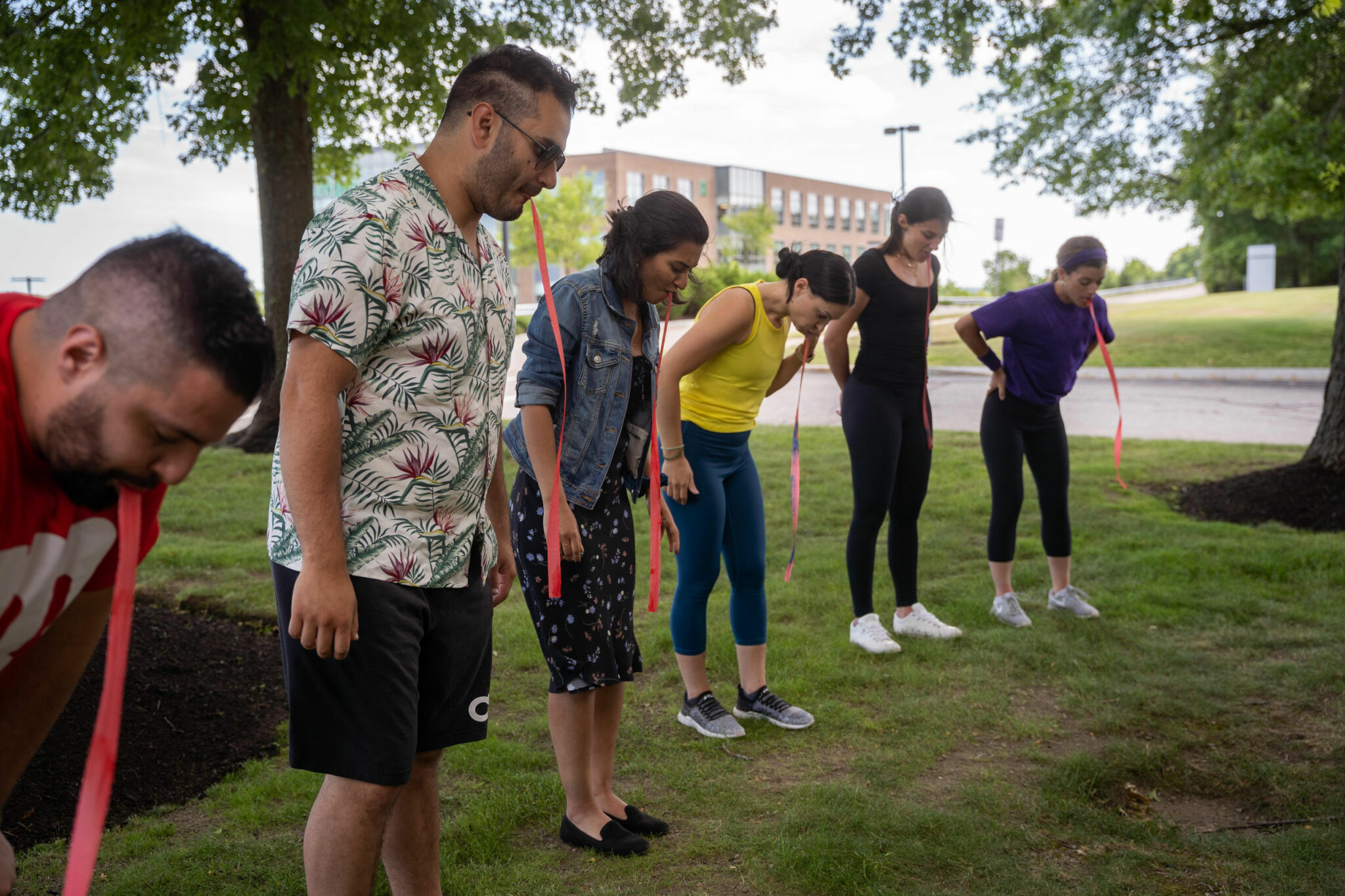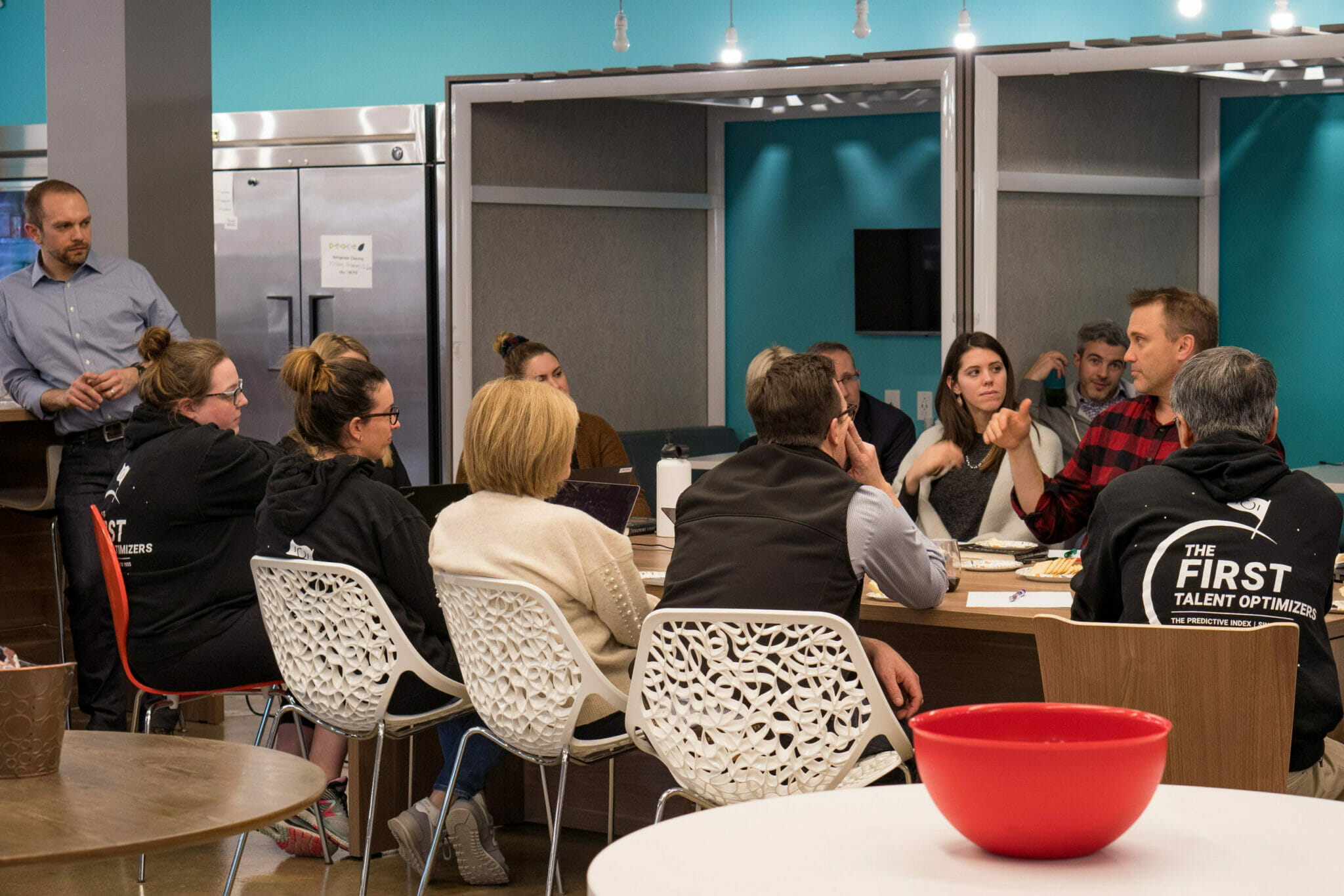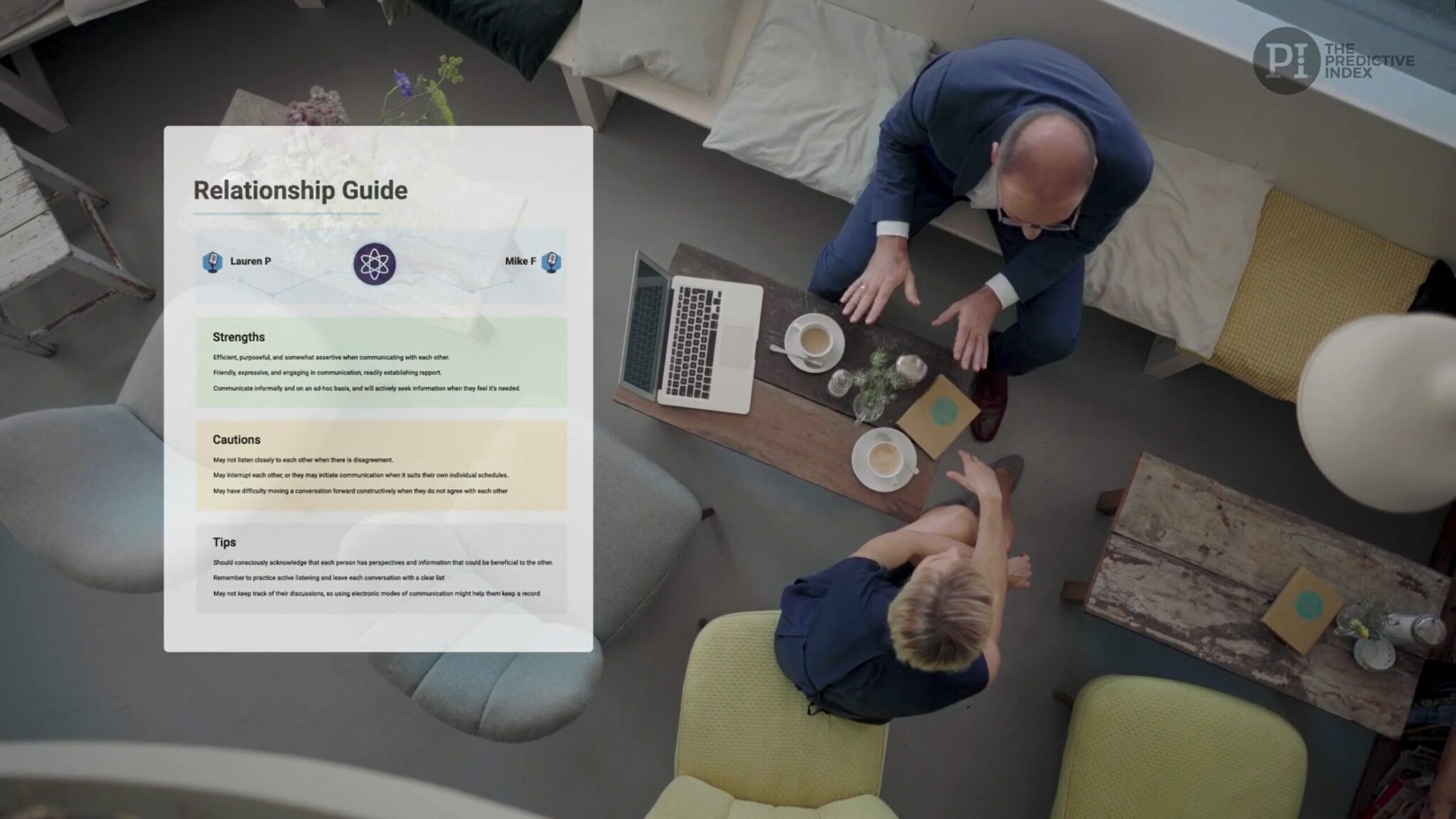As you matriculate into a new company, you’re acutely attuned to the seemingly little things that make this new working situation different from past work experiences.
When I started at The Predictive Index (PI) in May of 2017, one of the most interesting rituals to me was the daily “stand-up.” For the uninitiated, stand-ups are quite literally brief meetings where everyone stands up and gives a quick update about what they’re working on, the obstacles they’re facing, and what help they need to overcome those obstacles. Stand-ups are fairly common at many technology companies, and being a vet of the tech industry, stand-ups weren’t entirely new to me. But the PI marketing team stand-ups were unchartered territory for me in three ways:
- They happen every single day
- They are exceedingly casual and loose
- Everyone needs to tell the team whether they are “plus” or “minus” for the day, and the tally of the pluses and minuses are shared with the team at the end of the meeting.
Over time, I’ve come to regard these stand-ups as an absolutely integral part of our marketing team culture here at PI. And since being tapped to step up and manage the team, it’s the single element of our working cadence I’m most grateful to have inherited. I want to share why I think this meeting is so valuable to our team dynamics.
But first, let me get very specific about how they work:
Every day at 9:30AM, the entire team gathers in an open-air common area. Here’s what it looks like:

While everyone is expected to come to stand-up, other obligations and occasionally emergencies do get in the way. In cases someone has to miss stand-up altogether, they simply give a written update through our collaboration/messaging platform, Slack. And since we also have a flexible culture where people work remotely occasionally, we just use teleconferencing software, like Zoom, to allow those remote folks to participate virtually.

Typically, there are three to four minutes of completely inconsequential banter and casual conversation. Our group tends to be pretty loose and the jokes flow freely. But by 9:33AM or 9:34, I usually kick things off by asking a specific person to jump in with their daily update. As the team has grown, we’ve asked that people keep their updates tight—covering key things they’re working on and whether or not they’re encountering problems. Occasionally, I’ll probe a bit on things people bring during their updates, but as a general rule, nobody’s update lasts more than 2 minutes—and often times, they’re less than a minute long. We actually mic’d up our partner marketing manager, Patrick Reilly, for stand-up recently to show you exactly what it looks like:
We go around the horn and everyone gives their update. On most days, we’re done and back at our desks by 9:45AM.
As you can see from Patrick’s update, people conclude their stand-up with a simple “plus” or “minus,” and I’ll keep tabs on everyone’s pluses/minuses next to their initials on the table we’re gathered around (which happens to be a dry-erase surface) throughout the meeting:

The “plus” or “minus” is simply a reflection of whether or not people are feeling predominantly positive or negative about the day ahead. Too keep it simple, we don’t allow people to go neutral. Post-meeting, I’ll send out a note to the team over Slack to let them know what the overall tally of the +/- was for the day. Here’s what that looks like:

 The benefits of stand-up
The benefits of stand-up
So now that you’ve got a good sense of how these stand-ups run, let me give you five reasons why I think they’re so valuable to a team:
- Knowing what’s going on. Having the team know what one another are working on within the department seems like team management 101. But I’ve worked in many departments where I (and others) didn’t actually know what our colleagues were working on day-in, day-out. In those situations, there were typically weekly check-ins, but a lot can happen over the course of a week, and without daily check-ins, some people’s activities were still shrouded in a bit of mystery. That kind of mystery is not healthy. Checking in daily provides a simple framework to provide complete transparency and clarity.
- Creating human connections. Stand-ups are informal and quick, and they ensure that people are getting together face-to-face at least once every day. Again, it seems simple, but without a dedicated time for this to happen, it doesn’t necessarily happen on its own. The +/- system is key here. It helps us understand how other people on the team are doing, and whether they need help. It’s key here that you don’t create some kind of subliminal pressure to say you’re a “plus” when you’re not. We recently brought on a new client marketing manager, Danielle Dawkins, and here’s what she had to say about it: “The +/- system helps me to understand how to structure my interactions with team members throughout the day, and to prioritize projects and requests based on the overall temperature of the team…I truly appreciate how much emphasis is placed on empathy, and understanding, as expressed through the point system, and ultimately, fosters a more empathetic and collaborative team dynamic.”
- Accountability. If I tell the team on a Monday that I plan to have copy for a new website page by the end of the day, it’s painful to get up at Tuesday’s stand-up and announce it’s not yet done. And if I get up at Wednesday’s stand-up and say it’s still not done, it’s getting into embarrassing territory. That kind of transparency creates accountability. And that’s a good thing.
- Keeping a pulse on individual and team morale. As a team member (and especially as a manager), it’s important to know how your team is fairing emotionally. And all the better if you can truly quantify it. If my CEO asks me how the team is doing, I can literally show him a chart that details how we’re tracking. Of course, that doesn’t tell the entire story, but it’s our job as managers to understand the underlying issues that drive the numbers. And of course, if one person is “minus” more times than normal over the course of a week, that’s a queue for me as a manager that I need to be particularly attuned to how I can support that person.
- A framework for collaboration. When we give our updates, sometimes we ask for help. Or sometimes, a team member will offer a way they can contribute to someone else’s project. “Through stand-up, I’ve been able to identify potential points of collaboration that I might not have known about otherwise,” is how Danielle sums it up. This meeting has become the connective tissue for our team, a point at which requests and offers of help are exchanged. That’s a beautiful thing.
Rituals are powerful—whether it’s going to a religious service every weekend, going to to gym three times a week, or having dinner as a family every Wednesday night. On some level, these rituals come to define us. The best working teams establish great rituals too—whether it’s a weekly company meeting, a quarterly performance overview from the CEO, or the annual Office Olympics (photos from our Office Olympics here). It’s the consistency of these recurring events that come to define and add value to organizations. And with that in mind, I’d recommend the daily stand-up as a phenomenal tool to help define how your team operates day-in and day-out.
Teams are a central part to any organization. So how do you get your team to work together cohesively in order to achieve success?
Join 10,000 companies solving the most complex people problems with PI.
Hire the right people, inspire their best work, design dream teams, and sustain engagement for the long haul.
 The benefits of stand-up
The benefits of stand-up







